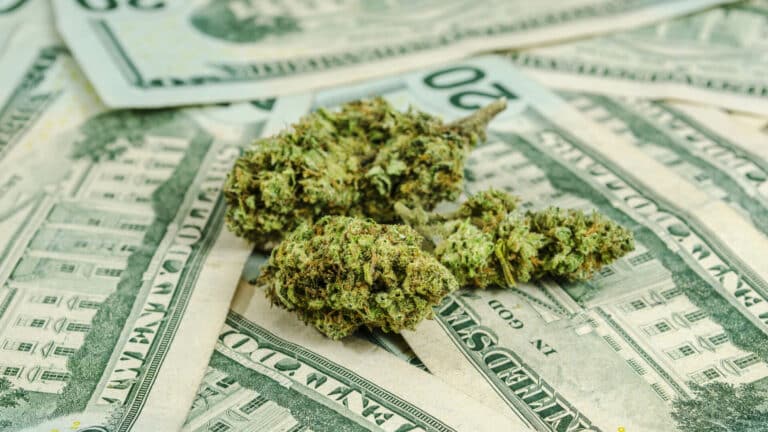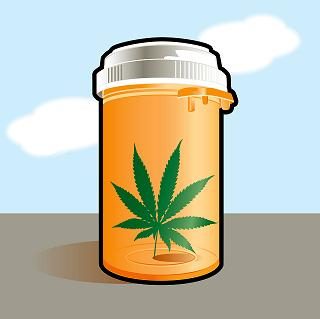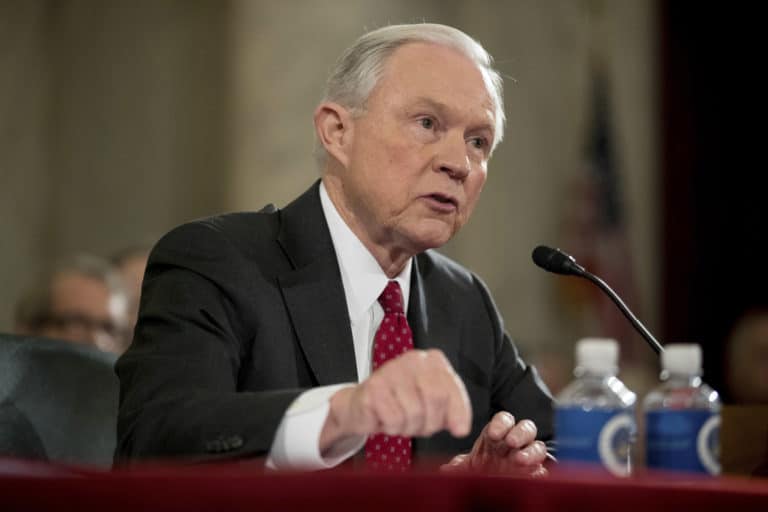 By Allen St. Pierre, NORML Executive Director
By Allen St. Pierre, NORML Executive Director
Written Testimony In Favor of Senate Bill 297
To Be Heard By The Members of the House Judiciary Committee
Thursday, March 28, 2013, at 1:00pm
By Allen St. Pierre
Executive Director
National Organization for the Reform of Marijuana Laws (NORML)
I thank members of the Maryland House Committee on the Judiciary for considering Senate Bill 297, which proposes to in effect decriminalize small amounts of cannabis possessed by adults.
NORML and its members in Maryland encourage this committee to agree with their senate colleagues that now is the right and proper time for Maryland to adopt a decriminalization enforcement policy for possession amounts of cannabis, and to join fifteen other states—and numerous large cities across the country such as Philadelphia, Pittsburgh, Chicago, Denver and Seattle—by adopting this cost-effective, time-saving, resource-stretching and law enforcement-friendly alternative public policy to the state’s current ‘arrest-n-prosecute’ policy for minor cannabis offenses (for non-medical use).
Currently, well over one-third of the US population resides in states and cities that have adopted cannabis decriminalization, in some cases, decades ago, and to no discernible ill effects.
The fifteen states with decriminalized cannabis enforcement laws, from west to east:
Alaska, Oregon, California, Nevada, Colorado, Nebraska, Minnesota, Mississippi, Ohio, North Carolina, New York, Connecticut, Rhode Island, Massachusetts and Maine.
The Nixon-appointed ‘Shafer Commission’ strongly opined for cannabis decriminalization in 1972. Despite Mr. Nixon rejecting his own commission’s public policy recommendations, numerous states accepted the wisdom and guidance of the massive report, starting with Oregon in 1973, which became the first state to officially decriminalize possession amounts of cannabis for adults.
With the ever-growing public sentiment nationwide in favor of substantive cannabis law reform measures, generally stated at…
*75% in support for medical access
*73% in support of decriminalization
*50-52% in support of legalization (voters in CO and WA approved legalization ballot initiatives by 55% respectively in 2012)
…Maryland legislators should adopt these popular public policy reforms, specifically, with the legislation approved by the senate at bar before them, Senate Bill 297.
Marijuana Decriminalization & Its Impact on Use
- Introduction
- U.S. Studies
- International Studies
“The available evidence suggests that removal of the prohibition against possession itself (decriminalization) does not increase cannabis use. … This prohibition inflicts harms directly and is costly. Unless it can be shown that the removal of criminal penalties will increase use of other harmful drugs, … it is difficult to see what society gains.”?- Evaluating alternative cannabis regimes. British Journal of Psychiatry. February 2001.
Introduction
Findings from dozens of government-commissioned and academic studies published over the past 25 years overwhelmingly affirm that liberalizing marijuana penalties does not lead to an increase in marijuana consumption or affect adolescent attitudes toward drug use.
Since 1973, 13 state legislatures — Alaska, California, Colorado, Maine, Massachusetts, Minnesota, Mississippi, Nebraska, Nevada, New York, North Carolina, Ohio and Oregon — have enacted versions of marijuana decriminalization. In each of these states, marijuana users no longer face jail time (nor in most cases, arrest or criminal records) for the possession or use of small amounts of marijuana. Internationally, many states and nations have enacted similar policies.
The following studies examine these decriminalization policies and their impact on marijuana use. The studies’ conclusions are listed chronologically.
U.S. Studies
“In sum, there is little evidence that decriminalization of marijuana use necessarily leads to a substantial increase in marijuana use.” - National Academy of Sciences, Institute of Medicine (IOM). 1999. Marijuana and Medicine: Assessing the Science Base. National Academy Press: Washington, D.C., 102.
“The Law Revision Commission has examined laws from other states that have reduced penalties for small amounts of marijuana and the impact of those laws in those states. … Studies of [those] states found (1) expenses for arrest and prosecution of marijuana possession offenses were significantly reduced, (2) any increase in the use of marijuana in those states was less that increased use in those states that did not decrease their penalties and the largest proportionate increase occurred in those states with the most severe penalties, and (3) reducing the penalties for marijuana has virtually no effect on either choice or frequency of the use of alcohol or illegal ‘harder’ drugs such as cocaine.”?- Connecticut Law Review Commission. 1997. Drug Policy in Connecticut and Strategy Options: Report to the Judiciary Committee of the Connecticut General Assembly. State Capitol: Hartford.
“There is no strong evidence that decriminalization affects either the choice or frequency of use of drugs, either legal (alcohol) or illegal (marijuana and cocaine).” - C. Thies and C. Register. 1993. Decriminalization of Marijuana and the Demand for Alcohol, Marijuana and Cocaine. The Social Sciences Journal 30: 385-399.
“In contrast with marijuana use, rates of other illicit drug use among ER [emergency room] patients were substantially higher in states that did not decriminalize marijuana use. The lack of decriminalization might have encouraged greater use of drugs that are even more dangerous than marijuana.”?- K. Model. 1993. The effect of marijuana decriminalization on hospital emergency room episodes: 1975-1978. Journal of the American Statistical Association 88: 737-747, as cited by the National Academy of Sciences, Institute of Medicine in Marijuana and Medicine: Assessing the Science Base. [6]
“The available evidence indicates that the decriminalization of marijuana possession had little or no impact on rates of use. Although rates of marijuana use increased in those U.S. states [that] reduced maximum penalties for possession to a fine, the prevalence of use increased at similar or higher rates in those states [that] retained more severe penalties. There were also no discernible impacts on the health care systems. On the other hand, the so-called ‘decriminalization’ measures did result in substantial savings in the criminal justice system.”?- E. Single. 1989. The Impact of Marijuana Decriminalization: An Update. Journal of Public Health 10: 456-466.
“Overall, the preponderance of the evidence which we have gathered and examined points to the conclusion that decriminalization has had virtually no effect either on the marijuana use or on related attitudes and beliefs about marijuana use among American young people.The data show no evidence of any increase, relative to the control states, in the proportion of the age group who ever tried marijuana. In fact, both groups of experimental states showed a small, cumulative net decline in annual prevalence after decriminalization.”?- L. Johnson et al. 1981. Marijuana Decriminalization: The Impact on Youth 1975-1980. Monitoring the Future, Occasional Paper Series, paper 13, Institute for Social Research, University of Michigan: Ann Arbor.
“Consumption appears to be unaffected, or affected only minimally by decriminalization, and most people believe that it has had little impact. Further, decriminalization has proven to be administratively and economically advantageous for state law enforcement efforts.”?- D. Maloff. 1981.Review of the effects of decriminalization of marijuana. Contemporary Drug Problems Fall: 307-322.
“Levels of use tended to be higher in the decriminalization states both before and after the changes in law. [S]tates which moderated penalties after 1974 (essentially a group of decriminalization states) did indeed experience an increase in rates of marijuana use, among both adolescents (age 12-17) and adults (18 or older). However, the increase in marijuana use was even greater in other states and the largest proportionate increase occurred in those states with the most severe penalties.”?- W. Saveland and D. Bray. 1980. American Trends in Cannabis Use Among States with Different Changing Legal Regimes. Bureau of Tobacco Control and Biometrics, Health and Welfare: Ottawa, as cited by E. Single in The Impact of Marijuana Decriminalization: an Update.
“The reduction in penalties for possession of marijuana for personal use does not appear to have been a factor in people’s decision to use or not use the drug.”?- California State Office of Narcotics and Drug Abuse. 1977. A First Report on the Impact of California’s New Marijuana Law. State Capitol: Sacramento.
“The number of [hospital] admissions directly due to marijuana use decreased from … 1970 to … 1975. In the same time, the number of admissions for drug abuse of all types, except alcohol, [also] decreased. … The following conclusion seem[s] warranted: medically significant problems from the use of marijuana have decreased coincident with decriminalizing marijuana.”?- P. Blachly. 1976. Effects of Decriminalization of Marijuana in Oregon.Annals of the New York Academy of Sciences 282: 405-415.
“Data collected at four points in time in Ann Arbor [Michigan] and the control communities (which underwent no change in marijuana penalties) indicated that marijuana use was not affected by the change in law [to decriminalization.]”?- R. Stuart et al. 1976. Penalty for the Possession of Marijuana: An Analysis of Some of its Concomitants. Contemporary Drug Problems 5: 553, as cited by E. Single in The Impact of Marijuana Decriminalization: an Update.
International Studies
“The Dutch experience, together with those of a few other countries with more modest policy changes, provides a moderately good empirical case that removal of criminal prohibitions on cannabis possession (decriminalization) will not increase the prevalence of marijuana or any other illicit drug; the argument for decriminalization is thus strong.”?- R. MacCoun and P. Reuter. 2001. Evaluating alternative cannabis regimes. British Journal of Psychiatry178: 123-128.
“Fear of apprehension, fear of being imprisoned, the cost of cannabis or the difficulty in obtaining cannabis do not appear to exert a strong influence on decisions about cannabis consumption. … Those factors may limit cannabis use among frequent cannabis users, but there is no evidence, as of yet, to support this conjecture.”?- D. Weatherburn and C. Jones. 2001. Does prohibition deter cannabis use? New South Wales (Australia) Bureau of Crime Statistics: Sydney.
“The available data indicate that decriminalization measures substantially reduced enforcement costs, yet had little or no impact on rates of use in the United States. In the South Australian community, none of the studies have found an impact in cannabis use which is attributable to the introduction of the Cannabis Expiation Scheme [decriminalization.]”?- E. Single et al. 2000. The Impact of Cannabis Decriminalisation in Australia and the United States. Journal of Public Health Policy21: 157-186.
“There is no evidence to date that the CEN [decriminalization] system … Has increased levels of regular cannabis use, or rates of experimentation among young adults. These results are broadly in accord with our earlier analysis of trends in cannabis use in Australia. …They are also consistent with the results of similar analyses in the United States and the Netherlands.”?- N. Donnelly et al. 1999. Effects of the Cannabis Expiation Notice Scheme on Levels and Patterns of Cannabis Use in South Australia: Evidence from the National Drug Strategy Household Surveys 1985-1995 (Report commissioned for the National Drug Strategy Committee). Australian Government Publishing Service: Canberra, Australia.
“The different laws which govern the use and sale of marijuana do not appear to have resulted in substantially different outcomes if we view those outcomes solely in terms of consumption patterns.”?- Australian Institute of Criminology, and the New South Wales Department of Politics 1997. Marijuana in Australia, patterns and attitudes. Monograph Series No. 31, Looking Glass Press (Public Affairs): Canberra, Australia.
“While the Dutch case and other analogies have flaws, they appear to converge in suggesting that reductions in criminal penalties have limited effects on drug use, at least for marijuana.” - R. MacCoun and P. Reuter. 1997. Interpreting Dutch cannabis policy: Reasoning by analogy in the legalization debate. Science 278: 47-52.
“General deterrence, or the impact of the threat of legal sanction on the cannabis use of the population at large, has been assessed in large scale surveys. These studies have compared jurisdictions in the USA and Australia where penalties have been reduced with those where they have not, and rates of use have been unaffected. … Since no deterrent impact was found, this research illustrates a high-cost, low-benefit policy in action. Therefore, if any penalty is awarded, it should be a consistent minimum one. … The greatest impact on reducing the harmful individual consequences of criminalization would be achieved by eliminating or greatly reducing the numbers of cannabis criminals processed in the first place.”?- P. Erickson and B. Fischer. 1997. Canadian cannabis policy: The impact of criminalization, the current reality and future policies. In: L. Bollinger (Ed.) Cannabis Science: From Prohibition to Human Right. Peter Lang, Frankfurt, Germany. 227-242.
“There does not appear to be a consistent pattern between arrest rates and [marijuana] prevalence rates in the [United States] general population. … Following precipitous increases, marijuana use began decreasing in the late 1970s, during a period of relative stability in arrest rates. The general deterrence effects of the law (i.e., arrest practices), are not apparent based on the intercorrelations of the measures presented here.”?- L. Harrison et al. 1995. Marijuana Policy and Prevalance. [15] In: P. Cohen and A. Sas (Eds.) Cannabisbeleid in Duitsland, Frankrijk en de Verenigde Staten. University of Amsterdam: Amsterdam. 248-253.
“The evidence is accumulating … that liberalization does not increase cannabis use [and] that the total prohibition approach is costly [and] ineffective as a general deterrent.”?- L. Atkinson and D. McDonald. 1995. Cannabis, the Law and Social Impacts in Australia. Trends and Issues in Crime and Criminal Justice 48.
“It has been demonstrated that the more or less free sale of [marijuana] for personal use in the Netherlands has not given rise to levels of use significantly higher than in countries which pursue a highly repressive policy.”?- Netherlands Ministry of Health, Welfare and Sport. 1995. Drugs: Policy in the Netherlands: Continuity and Change. The Hague.
“It is clear … that the introduction of the CEN scheme [decriminalization] in South Australia has not produced a major increase in rates of cannabis use in South Australia by comparison with changes occurring elsewhere in Australia. … It is not possible to attribute the moderate increases in cannabis use rates in South Australia to the removal of criminal penalties for small-scale cannabis offenses in that state.”?- N. Donnelly et al. 1995. The effects of partial decriminalization on cannabis use in South Australia, 1985 to 1993. Australian Journal of Public Health 19: 281-287.
“The available evidence suggests that those jurisdictions which have decriminalized personal cannabis use have not experienced any dramatic increase in prevalence of use.” - National Drug and Alcohol Research Center. 1994. Patterns of cannabis use in Australia. Monograph Series No. 27, Australian Government Publishing Service: Canberra, Australia.
“It appears clear that there is no firm basis for concluding that the introduction of the Cannabis Expiation Notice System in South Australia in 1987 has had any detrimental effect in terms of leading to increased levels of cannabis use in the Southern Australian community. … In the context of a society which is increasingly well informed about the risks associated with drug use in general, a move toward more lenient laws for small scale cannabis offenses, such as the CEN [decriminalization] system, will not lead to increased cannabis use.”?- Drug and Alcohol Services Council of South Australia, Monitoring, Evaluation and Research Unit. 1991. The Effects of Cannabis Legalization in South Australia on Levels of Cannabis Use. DASC Press: Parkside, Australia.
Source: NORML - make a donation








